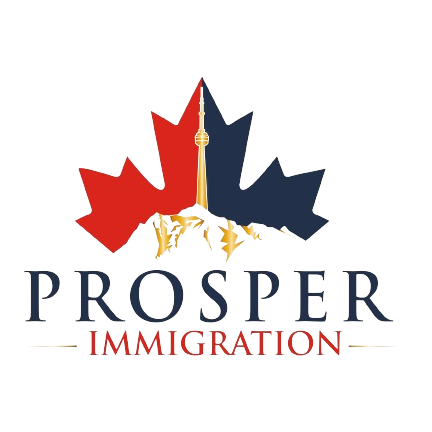Application requirements for the Canadian Experience Class
For qualified employees with prior job experience in Canada who desire to immigrate permanently, there is the Canadian Experience Class (CEC).
Canadian government research demonstrates that having Canadian experience is a major signal that an immigrant would integrate swiftly into the Canadian labour market and perform well in the labour market over the long term. This is why Canadian experience has become so crucial in federal and provincial immigration programmes.
Candidates for the Canadian Experience Class have accrued at least one year of Canadian work experience. These applicants can receive CRS points for their Canadian experience because this is a highly rated element under the CRS. About 430 points may be considered a “excellent” score for a CEC-specific draw, and it’s likely that the same number is needed for the more recent FST-specific drawings.
A CEC application can be processed in as little as three to four months, making it one of the quickest paths to permanent residence in Canada.

Minimum Requirements
Having to achieve the language proficiency standards necessary for your position for each language writing, reading, hearing, and speaking. Also having at least one year of recent, competent job experience in Canada; this can be satisfied in a number of ways, including:
- One job, full-time: 30 hours each week for 12 months is one full year of work (1,560 hours)
- For instance, working 15 hours per week for 24 months equals one year of full-time employment (1,560 hours)

- You’ve applied for asylum in Canada.
- Your employment is unauthorised.
- And you have no temporary resident status in Canada despite having work experience there.
- Managing positions (skill level 0)
- professional positions (skill type A)
- skilled crafts and technical employment (skill type B)
- To fulfil this criterion, you may have as many part-time jobs as you like. Doing more than one job full-time: 30 hours per week for 12 months at more than one employment equals one full year (1,560 hours).
- You can earn points for a certificate, diploma, or degree from a Canadian if you attended school there; either a post-secondary institution or a secondary school.
- If you have completed a foreign credential and obtained an Educational Credential Assessment (ECA) report for immigration purposes from a designated organisation demonstrating that your education is equivalent to a completed certificate, diploma, or degree from a Canadian, you may receive points for your foreign education; either a post-secondary institution or a secondary school.
Education
The Canadian Experience Class has no educational prerequisites. There are two ways to raise your ranking in the Express Entry pool for immigration-related objectives.
Self-employment and internships for students
The minimal criteria for this programme do not include self-employment or job experience earned while you were a full-time student (even if it was during a co-op work period).
Language Ability
You have to fulfil the Canadian Language Benchmark 7 requirement for NOC 0 or A positions, or Canadian Language Benchmark 5 for NOC B jobs, as the minimal language proficiency.
Testing the language proficiency for describing the exam results in the Express Entry profile in writing, reading, hearing, and speaking. Your language tests must be current on the day you apply for permanent residency for a period of two years from the date of the test result.
Where you can live in Canada?
You must intend to reside somewhere other than Quebec. The Quebec province chooses its own specialised employees. For further details, read Quebec-selected skilled employees if you intend to reside there. There will be inquiry about your intended residence in Canada when you complete your profile. You are not required to relocate to that region or province. If you are a Provincial Nominee, you must relocate to the province or territory that nominated you.
How to apply for the Canadian Experience Class: –
1. Obtain a Canadian work permit – An essential need for this programme is having legal authorization to work in Canada. An open work visa could be a possibility for some persons, such as those who qualify for the International Experience Canada (IEC) programme or the spouse or common-law partner of an international student or foreign worker in Canada. Others may receive an employer-specific (‘closed’) work permit. The Labour Market Impact Assessment (LMIA)-approved work permits and intra-company transfers are two examples of closed work permits.
2. Eleven and a half months won’t cut it; to qualify for the Canadian Experience Class, you must have at least a year of work experience (or more, if you work part-time).
3. Make sure you also satisfy the requirements – Finish taking the language exam. IELTS or CELPIP tests are available for applicants to take for English. The TEF and TCF are the choices that are currently available for French. Additional points may be given to candidates who demonstrate some proficiency in both French and English.
4. Build your Express Entry profile – The IRCC website is used to complete this stage. You will be requested to submit certain personal data, some of which is self-declared (such your employment history) and some of which has to be supported by evidence.
5. Increase your CRS profile and ranking – Consult our tutorial on how to raise your CRS score if it falls below the threshold needed to be invited to apply.
6. Obtain a request to apply – The opportunity to apply for permanent residence with your family, if eligible, makes this phase possibly the most enjoyable. You will then have 60 days to complete and submit your application.
7. Completing a medical exam, providing security background checks, and submitting an e-application are all required. All candidates for the Canadian Experience Class are examined for potential medical and criminal grounds for exclusion. You must include documentation supporting the completion of a medical examination with an IRCC-approved panel doctor with your application.
8. After reviewing of the electronic application, a Canadian immigration official will inform you of any additional requirements.
9. In fewer than six months, 80% of applications made under the Canadian Experience Class are processed.
10. That’s the end of the procedural requirements. And if every process is worked smoothly, you will get you obtain the CEC.
Conclusion
The first thing a prospective employer could ask during an interview with a newbie to Canada is to explain about their past work experiences. Even though Canada takes pride in its open doors policy toward immigrants, experts warn that people who complete their higher education and professional training in their native country may encounter difficulties finding job in the land of the long white cloud. Many times, competent immigrants are informed by their employers that they were not chosen for a post because they lacked “Canadian experience.”
Canada is sometimes referred to be a “heaven for immigrants.” Canada continues to astound the international community by boosting its yearly immigrant intake. It has become nearly perfect for individuals to choose to come and permanently settle down in the nation because of its hospitable personality, accelerating economic growth, and straightforward immigration procedures.
Many foreign-born residents have realised the benefits of immigration to Canada, which has a robust economy offering many possibilities and a population that is varied in terms of culture. Its educational system attracts immigrants and has helped Canada as a whole build a future of innovation and growth.
In the world, Canada was ranked as the second-most beautiful nation. Not only that, it also a safe and secure place to settle is there. In accordance with Canadian Charter 6, immigrants who have obtained permanent status in Canada are entitled to all government and legal protections. This is considered by many who value safety to be the most significant perk of living in Canada.



